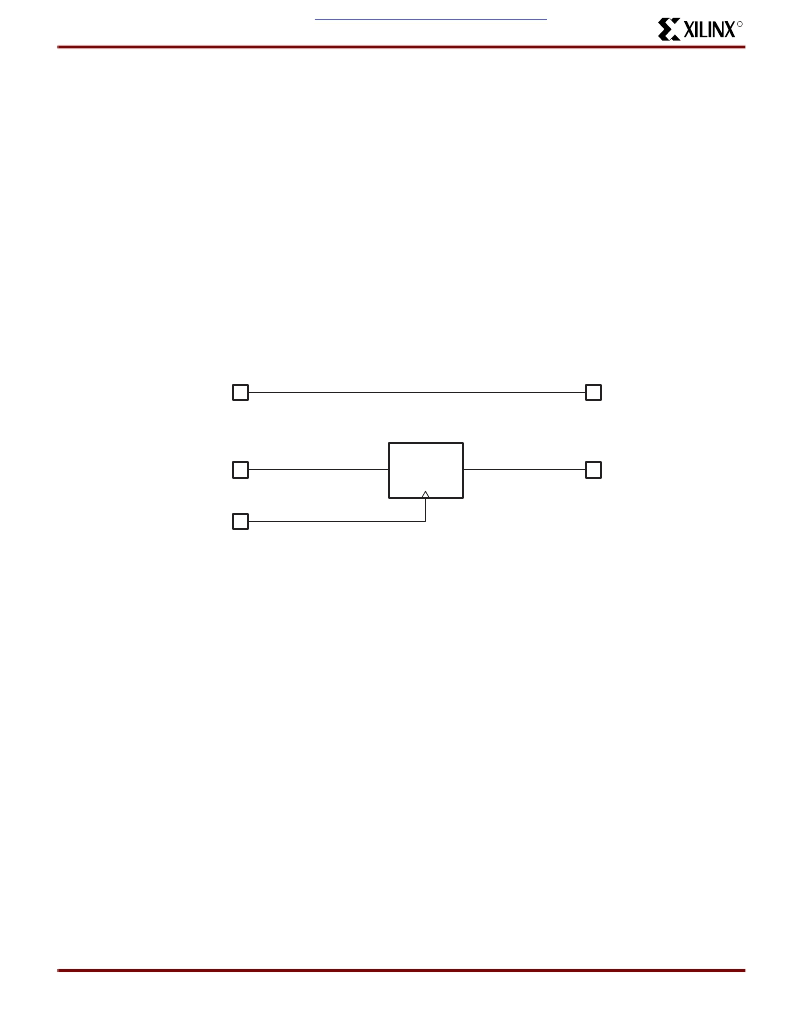- 您現(xiàn)在的位置:買(mǎi)賣(mài)IC網(wǎng) > PDF目錄368396 > PZ3128IS15BP-S Electrically-Erasable Complex PLD PDF資料下載
參數(shù)資料
| 型號(hào): | PZ3128IS15BP-S |
| 英文描述: | Electrically-Erasable Complex PLD |
| 中文描述: | 電可擦除復(fù)雜可編程邏輯器件 |
| 文件頁(yè)數(shù): | 5/18頁(yè) |
| 文件大?。?/td> | 161K |
| 代理商: | PZ3128IS15BP-S |
第1頁(yè)第2頁(yè)第3頁(yè)第4頁(yè)當(dāng)前第5頁(yè)第6頁(yè)第7頁(yè)第8頁(yè)第9頁(yè)第10頁(yè)第11頁(yè)第12頁(yè)第13頁(yè)第14頁(yè)第15頁(yè)第16頁(yè)第17頁(yè)第18頁(yè)

R
XCR3128: 128 Macrocell CPLD
5
www.xilinx.com
1-800-255-7778
DS034 (v1.3) October 9, 2000
This product has been discontinued. Please see
for details.Simple Timing Model
Figure 4
shows the CoolRunner Timing Model. The Cool-
Runner timing model looks very much like a 22V10 timing
model in that there are three main timing parameters,
including t
PD
, t
SU
, and t
CO
. In other competing architec-
tures, the user may be able to fit the design into the CPLD,
but is not sure whether system timing requirements can be
met until after the design has been fit into the device. This
is because the timing models of competing architectures
are very complex and include such things as timing depen-
dencies on the number of parallel expanders borrowed,
sharable expanders, varying number of X and Y routing
channels used, etc. In the XPLA architecture, the user
knows up front whether the design will meet system timing
requirements. This is due to the simplicity of the timing
model.
TotalCMOS
Design Technique for Fast Zero
Power
Xilinx is the first to offer a TotalCMOS CPLD, both in pro-
cess technology and design technique. Xilinx employs a
cascade of CMOS gates to implement its Sum of Products
instead of the traditional sense amp approach. This CMOS
gate implementation allows Xilinx to offer CPLDs which are
both high performance and low power, breaking the para-
digm that to have low power, you must have low perfor-
mance. Refer to
Figure 5
and
Table 1
showing the I
CC
vs.
Frequency of our XCR3128 TotalCMOS CPLD (data taken
w/eight up/down, loadable 16 bit counters at 3.3V, 25
°
C).
Figure 4: CoolRunner Timing Model
OUTPUT PIN
INPUT PIN
SP00441
t
PD_PAL
= COMBINATORIAL PAL ONLY
t
PD_PLA
= COMBINATORIAL PAL + PLA
OUTPUT PIN
INPUT PIN
D
Q
REGISTERED
t
SU_PAL
= PAL ONLY
t
SU_PLA
= PAL + PLA
REGISTERED
t
CO
GLOBAL CLOCK PIN
相關(guān)PDF資料 |
PDF描述 |
|---|---|
| PZ3128-S10A84 | IC-SM-CMOS PLD |
| PZ3128-S10BB1 | Electrically-Erasable Complex PLD |
| PZ3128-S10BB1-S | Electrically-Erasable Complex PLD |
| PZ3128-S10BB2 | Electrically-Erasable Complex PLD |
| PZ3128-S10BE | Electrically-Erasable Complex PLD |
相關(guān)代理商/技術(shù)參數(shù) |
參數(shù)描述 |
|---|---|
| PZ32146-0120 | 制造商:Foxconn 功能描述: |
| PZ37047-S01-A | 制造商:Foxconn 功能描述:Pga Socket, 370 Contacts, 19x19i, 0.05 Row Spacing, Pc Tail Terminal |
| PZ37047-S01-S | 制造商:Foxconn 功能描述:Pga Socket, 370 Contacts, 19x19i, 0.050 Row Spacing, Pc Tail Terminal |
| PZ3X1-15/16 | 制造商:Eclipse Tools 功能描述: |
| PZ-4-3 | 制造商:RICHARD MANNO 功能描述: |
發(fā)布緊急采購(gòu),3分鐘左右您將得到回復(fù)。